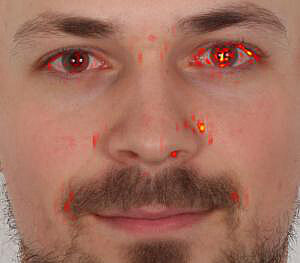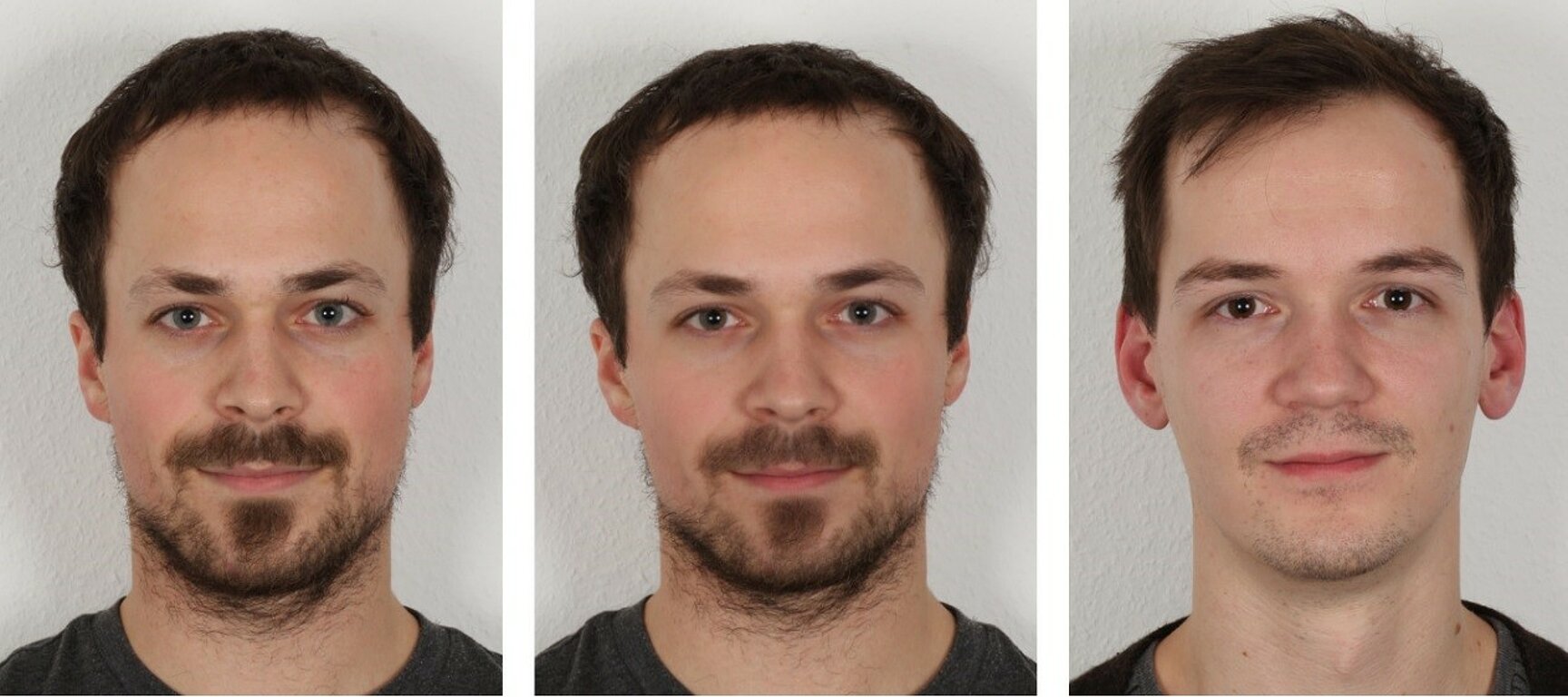
ANANAS
Anomaly detection to prevent attacks on facial recognition systems.
A joint research project funded by the Federal Ministry of Education and Research.
Duration: June 2016 – May 2019
Detection and Generation of Face Morphing Attacks
Identification tasks with identity cards, passports and visa are often performed automatically by biometric face recognition systems. Criminals can trick these systems, such that two people can use the same passport for authentication. This attack (morphing attack) is performed by fusing two face images to a synthetic face image that contains characteristics of both people. Using this image on a passport, both people are authenticated by a biometric face recognition system.
The objective of ANANAS is to analyze the risk of morphing attacks and develop methods to detect them. The research on morphing attack detection methods in ANANAS is highly diversified focusing on semantic image content, camera characteristics and biometrics. The combination of methods from these different concepts of forensic image analysis promises an important toolset for governmental authorities to ensure and rate the trustworthiness of face images, especially on sovereign documents. HHI’s contribution to the project concerns two tasks:
- Management of an evaluation dataset with original face images and morphing attacks and development of new morphing attacks,
- Development of morphing attack detection methods based on semantic image content.

Project Consortium
- Otto-von-Guericke-Universität Magdeburg
- Bundesdruckerei GmbH, Berlin
- DERMALOG Identification Systems GmbH, Hamburg
- Fraunhofer-Institut für Nachrichtentechnik Heinrich-Hertz-Institut (HHI), Berlin
- Fraunhofer-Institut für Produktionsanlagen und Konstruktionstechnik (IPK), Berlin
Related Research Topics
